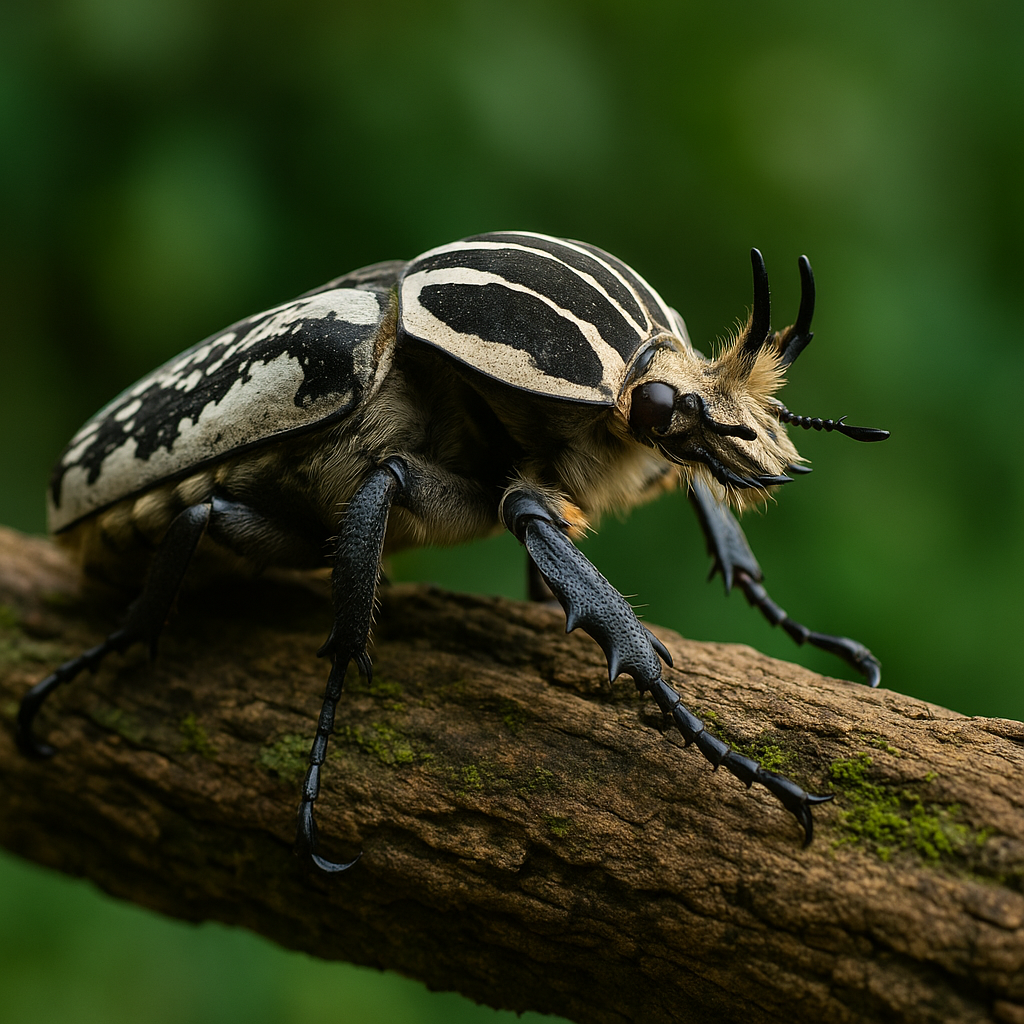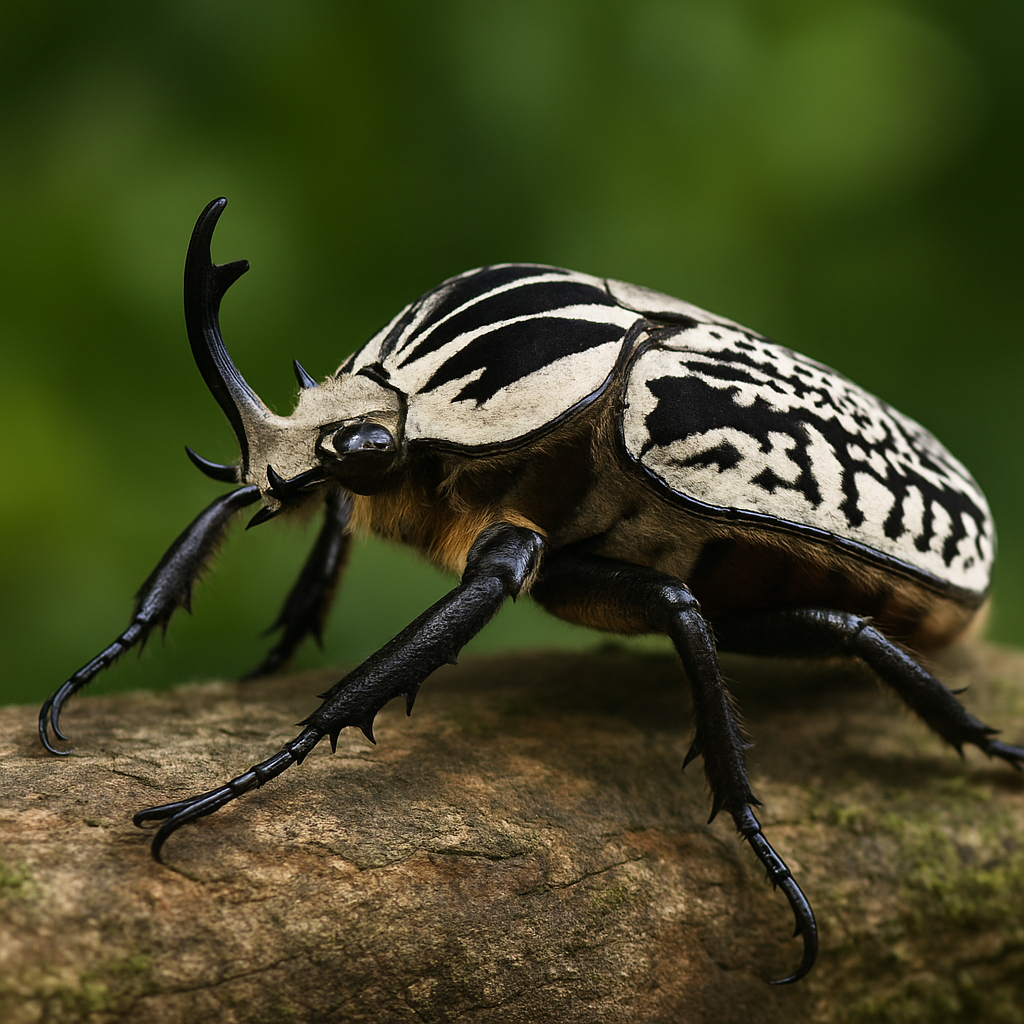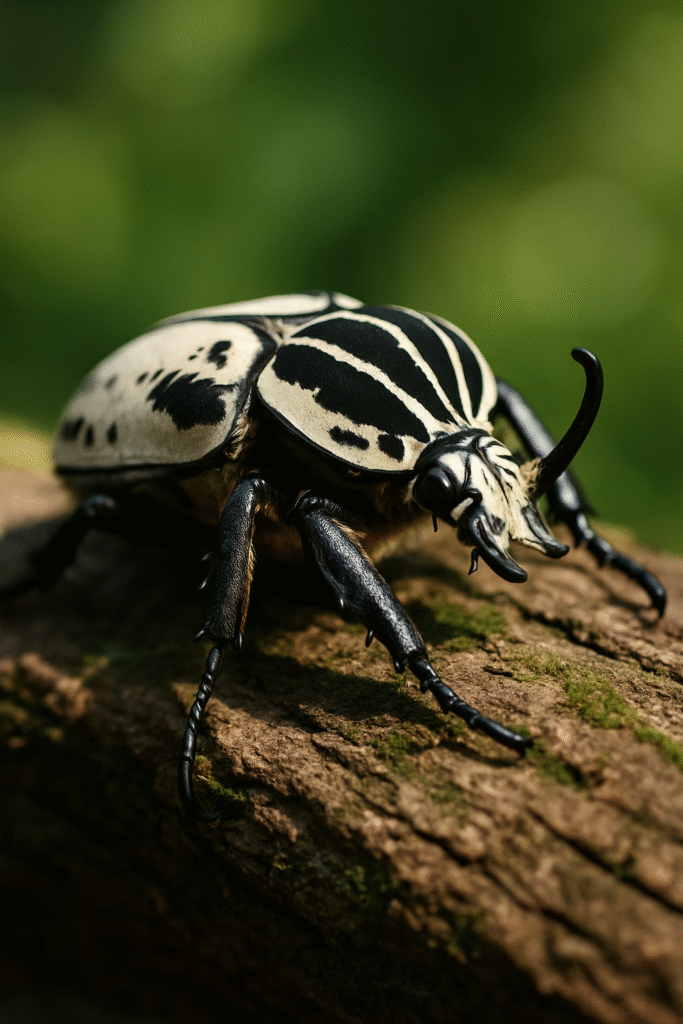In the shadowed heart of Africa’s tropical forests, where vines weave into living walls and the soil pulses with unseen life, a creature stirs that seems more legend than insect. The Goliath beetle (genus Goliathus), clad in armor that gleams with white, black, and chestnut patterns, is among the largest insects alive today. Some specimens weigh more than 100 grams—heavier than a sparrow—and stretch the span of a human hand.
To see one take flight is to witness improbability: a living tank rising on wings, its buzzing drone a low thunder through the canopy. To hold one in hand is to feel the paradox of nature—delicate enough to feed on fruit and sap, yet armored like a miniature warrior forged for battle.
Giants of the Insect World
The Goliath beetle’s size alone has earned it a place among nature’s titans. Males, with their distinctive Y-shaped horns, clash like medieval knights over the right to mate, their armored bodies colliding with the weight of tiny battering rams. Females, broader and heavier, guard the next generation, depositing eggs in rich soil where larvae will grow into pale, grub-like giants—sometimes reaching the size of a sausage before metamorphosis transforms them into winged colossi.

Unlike butterflies or moths, whose transformations evoke fragility and fleeting beauty, the beetle’s metamorphosis speaks of endurance, of cycles that return strength to the world in heavier form.
Sacred Armor, Mythic Echoes
Human imagination has long been captivated by beetles, and none more than these massive creatures. Across Africa, stories cast them as symbols of protection, strength, and persistence. Their sheer durability made them natural guardians in folklore—embodiments of resilience that could not easily be crushed.
Beyond Africa, the beetle carries echoes of the scarab revered in ancient Egypt, itself a cosmic symbol of rebirth. While not the same species, the Goliath beetle’s monumental presence rekindles this mythic thread: that within the smallest, most overlooked corners of the natural world live emissaries of eternity.
Beauty in Brutality
To watch a pair of Goliath beetles wrestle on a rotting log is to see the raw theater of survival. They grapple with horns and legs, pushing, toppling, heaving each other into the leaf litter below. Victory ensures the chance to mate, and thus to continue a lineage that has endured for millions of years. Defeat is swallowed by the forest floor, absorbed into the quiet cycles of decay and renewal.

Yet despite their armored exteriors and combative lives, Goliath beetles feed not on flesh, but on sweetness—tree sap, fruit juices, and nectar. Their survival hinges not on predation, but on the health of forests that provide these resources.
Fragility of a Giant
Ironically, these giants are fragile in the face of human pressure. Deforestation gnaws at their habitats. The global insect trade prizes them as exotic collectibles, driving unsustainable harvesting. And climate change threatens to unbalance the ecosystems that have sheltered them for millennia.
The Goliath beetle, for all its size and might, is a reminder that strength alone does not guarantee survival. In a world reshaped by human hands, even titans can fall.
A Mirror of Endurance
To stand in a rainforest and watch a Goliath beetle lift from the earth into the air is to witness a paradox: strength bound to fragility, endurance tethered to chance. They remind us that nature’s giants do not roar like lions or crash like elephants—they hum, they crawl, they climb unnoticed beneath the leaves. And yet, their presence is no less monumental.

In the beetle’s heavy wingbeats lies an ancient rhythm, one that predates us and will, if we allow, outlast us. The Goliath beetle is not merely an insect—it is a living testament to the power of persistence, an armored ghost of the forests, carrying on a story as old as the soil itself.


Reply